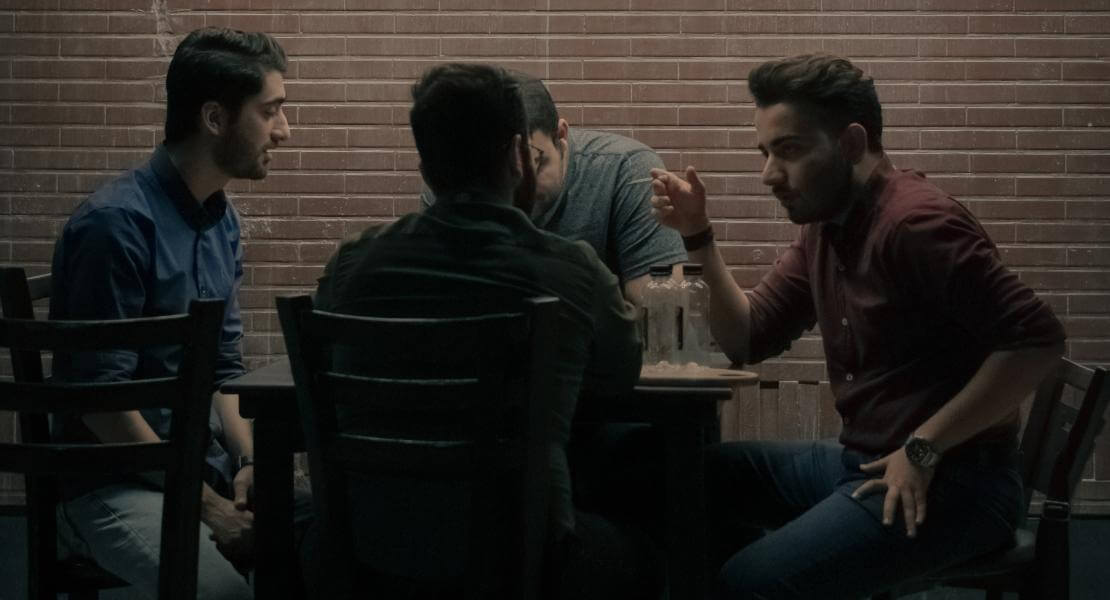Childhood sexual abuse is a public health problem with lasting consequences. It affects at least 1 in 10 boys,1,2 which, is the tip of the iceberg given that male survivors face many barriers that limit their disclosure3.
On average, male survivors wait more than 20 years to disclose for the first time and wait an average of 28 years before discussing it in depth4,5,6. These delays are associated with fewer requests for help, as well as more psychological and relationship difficulties7,8. Thus, it appears that much more public education is needed to better understand the barriers to disclosure for men who have experienced childhood sexual abuse.
Gender stereotypes and norms of masculinity are at the heart of these barriers9. From childhood, boys are taught that they must be strong, self-reliant, in control of their emotions and able to stand up for themselves or find solutions to their problems on their own. Victimization runs counter to these norms. It exacerbates feelings of shame, vulnerability, weakness, inferiority, humiliation, stigma, and so on. In turn, these feelings reinforce secrecy and isolation3, minimizing the possibility of seeking and receiving help10.
Some male survivors also fear the loss of emotional control that disclosure may cause, as emotional responses such as crying go against male norms. Not disclosing then becomes a strategy for these men to preserve a coherent sense of their masculinity3.
Furthermore, popular myths about the sexual victimization of boys stand in the way of disclosure. Here are four examples:
1. A man cannot have been sexually abused as a child. This myth reflects that a man should always be--and have been--strong enough to defend themselves; thus, he would be invulnerable to assault. Because men are rarely heard from as victims of sexual assault11, they may have difficulty recognizing their experience as sexual assault, which hinders their disclosure.
2. An abused boy is destined to grow up to be an abuser himself. The fear of being seen as a potential child predator if they disclose sexual abuse, the risk of rejection, and stigmatization limit the disclosure of male survivors3. Some male survivors report that this fear diminishes their confidence in their parenting abilities12. Yet, studies indicate that the vast majority of male survivors will never become abusers13.
3. Boys are always interested in having sex with women. Social attitudes that minimize, normalize, or even encourage sexual contact between young men and women impede disclosure3. Survivor’s fear being humiliated, not being believed or understood, or even being told they are "lucky" if they disclose being assaulted by a woman11.
4. Boys assaulted by men are gay or will become gay. Concern about being perceived as gay keeps some men silent about sexual assault because they fear homophobic reactions3. Some survivors also report confusion about their sexual orientation, especially if they had sexual responses at the time of the assault (erection, etc.). This idea stems from the misconception that bodily responses to being touched sexually always reflects pleasure and consent, when in fact, they are physiological responses that have nothing to do with the consenting participation of the assaulted boy11.
Finally, the lack of specific services for male survivors also impedes disclosure and help-seeking. Many survivors do not know where to go for help10. In addition, most health care workers are not trained to recognize the symptoms (dissociation, emotional dysregulation, etc.) associated with men's childhood sexual abuse. In addition, they may not be aware of the issues surrounding disclosure. As a result, men may be less likely to talk about the abuse they have experienced10.
On the other hand, there are key elements that can support disclosure for male survivors of childhood sexual abuse:
1. Deconstruct male gender stereotypes. It is important to promote boys' expression of emotion, sensitivity, vulnerability, and help-seeking3. To do this, adults (parents, teachers, etc.) can encourage open discussions with boys about the discourses surrounding masculinity, for example, by questioning the stereotype that men are not vulnerable. They can also be encouraged to write down or share their feelings with people they trust15. Also, they can be introduced to content (books, television, etc.) that features non-stereotypical masculinity. When exposed to certain male stereotypes, boys can be invited to discuss and reflect on the content16.
2. Raise awareness of the myths about sexual assault of boys, such as the inclusion of content on this topic in sexual violence prevention programs in educational and work settings.
3. Increase service provision and funding. The access, quantity, and quality of services focused on the needs of male survivors of childhood sexual abuse must be improved. These services include individual and group therapy, crisis centers, etc. Adequate training of health professionals is also important to foster a trauma-sensitive society10.
4. Giving more visibility to this issue is central to normalizing and validating the experiences of male survivors, promoting their disclosure, and ultimately their well-being. To do this, educational awareness campaigns on the subject are necessary. These campaigns should encourage men to break the silence and seek support when needed.
In conclusion, childhood sexual abuse experienced by men is still marked by taboos that impede disclosure. Trauma-sensitive practices invite the realization of the extent and particularities of male sexual victimization and the recognition of its effects to promote appropriate responses. Most importantly, it is vital to prevent survivors from being re-traumatized through disclosure. Disclosure offers a fragile yet rich opportunity; it marks a turning point toward healing, empowerment, and well-being under optimal circumstances.
The publication of this article was made possible thanks to our partner, the Interdisciplinary Research Centre on Intimate Relationship Problems and Sexual Abuse (CRIPCAS), and the Fonds de recherche du Québec.
To cite this article: Lebeau, R., et Godbout, N. (2022, January 30). The realities we do not want to talk about. TRACE Blog. https://natachagodbout.com/en/blog/realities-we-do-not-want-talk-about&…;
- 1Kloppen, K., Haugland, S., Svedin, C. G., Mæhle, M., etBreivik, K. (2016). Prevalence of child sexual abuse in the nordic countries : A literature review. Journal of Child Sexual Abuse, 25(1), 37‑55. https://doi.org/10.1080/10538712.2015.1108944
- 2Stoltenborgh, M., van IJzendoorn, M. H., M. Euser, E., et Bakermans-Kranenburg, M. J. (2011). A global perspective on child sexual abuse : Meta-analysis of prevalence around the world. Child Maltreatment, 16(2), 79‑101. https://doi.org/10.1177/1077559511403920
- 3a3b3c3d3e3f3gEaston, S., Saltzman, L. Y., et Willis, D. G. (2014). "Would you tell under circumstances like that?” : Barriers to disclosure of child sexual abuse for men. Psychology of Men & Masculinity, 15(4), 460‑469. http://dx.doi.org/10.1037/a0034223
- 4O’Leary, P. J., et Barber, J. (2008). Gender differences in silencing following childhood sexual abuse. Journal of Child Sexual Abuse, 17(2), 133‑143. https://doi.org/10.1080/10538710801916416
- 5Easton, S. (2013). Disclosure of child sexual abuse among adult male survivors. Clinical Social Work Journal, 41(4), 344‑355. https://doi.org/10.1007/s10615-012-0420-3
- 6Easton, S. (2012). The disclosure process for men with histories of sexual abuse. Clinical Social Work Journal, 12, 1‑12.7 Halvorsen, J. E., Tvedt Solberg, E., & Hjelen Stige, S. (2020). “To say it out loud is to kill your own childhood.” – An exploration of the first-person perspective of barriers to disclosing child sexual abuse. Children and Youth Services Review, 113, 104999. https://doi.org/10.1016/j.childyouth.2020.104999
- 7Halvorsen, J. E., Tvedt Solberg, E., & Hjelen Stige, S. (2020). “To say it out loud is to kill your own childhood.” – An exploration of the first-person perspective of barriers to disclosing child sexual abuse. Children and Youth Services Review, 113, 104999. https://doi.org/10.1016/j.childyouth.2020.104999
- 8Dube, S.R., Anda, R.F., Whitfield, C.L., et al. (2005). Long-term consequences of childhood sexual abuse by gender of victim. American Journal of Preventive Medicine, 28, 430-438.
- 9Berke, D. S., Reidy, D., et Zeichner, A. (2018). Masculinity, emotion regulation, and psychopathology : A critical review and integrated model. Clinical Psychology Review, 66, 106‑116. https://doi.org/10.1016/j.cpr.2018.01.004
- 10a10b10c10dGruenfeld, E., Willis, D. G., et Easton, S. D. (2017). “A very steep climb” : Therapists’ perspectives on barriers to disclosure of child sexual abuse experiences for men. Journal of Child Sexual Abuse, 26(6), 731‑751. https://doi.org/10.1080/10538712.2017.1332704
- 11a11b11cSexual Assault Centre. (s. d.). La violence sexuelle chez les hommes. University of Alberta. Consulté le 20/12/2021 sur https://www.ualberta.ca/current-students/sexual-assault-centre/resources.html
- 12Wark, J., et Vis, J.-A. (2018). Effects of child sexual abuse on the parenting of male survivors. Trauma, Violence, & Abuse, 19(5), 499‑511. https://doi.org/10.1177/1524838016673600
- 13Lambie, I., et Reil, J. (2020). I was like a kid full of revenge: Self-reported reasons for sexual offending by men who were sexually abused as children. Journal of Sexual Aggression, 0(0), 1‑14. https://doi.org/10.1080/13552600.2020.1820088
- 15Ressentir, c’est recevoir un message : Coffre à outils., (s. d.). Mouvement Santé mentale Québec., Consulté le 16/01/2022 sur https://www.mouvementsmq.ca/sites/default/files/msm41_coffre_a_outils-fiches_animation_lowres.pdf
- 16If he can see it, will he be it ? Representation of masculinity in boys’ television. (2020.). Geena Davis Institute on Gender in Media. https://seejane.org/research-informs-empowers/if-he-can-see-it-will-he-be-it/








